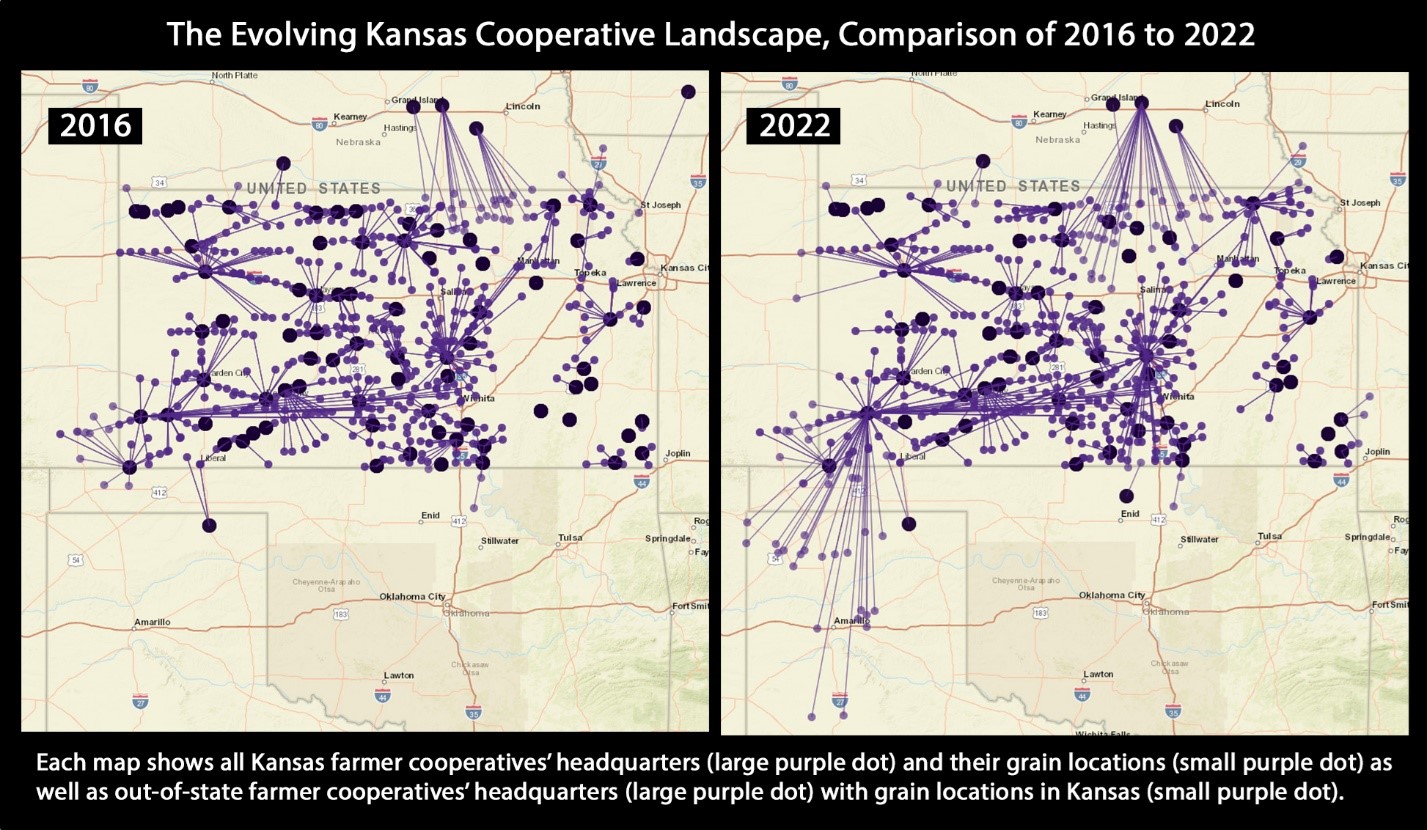The Evolving Kansas Farmer Cooperative Landscape
 Since 2016, the Kansas farmer cooperative landscape has changed significantly. Cooperatives have merged, acquired new businesses, formed LLCs and invested in infrastructure to continue to add value to their farmer-owners. In 2016, there were 81 local, farmer cooperatives with a Kansas-based headquarter location. Today, there are 61. While there are fewer Kansas farmer cooperatives today, the presence of the cooperative system remains strong in Kansas.
Since 2016, the Kansas farmer cooperative landscape has changed significantly. Cooperatives have merged, acquired new businesses, formed LLCs and invested in infrastructure to continue to add value to their farmer-owners. In 2016, there were 81 local, farmer cooperatives with a Kansas-based headquarter location. Today, there are 61. While there are fewer Kansas farmer cooperatives today, the presence of the cooperative system remains strong in Kansas.
An illustration of this evolving landscape is tracked through a cooperative mapping project conducted by the Arthur Capper Cooperative Center (ACCC). The first map, created in 2016 and the most recent map are shown above. In each map, the large purple dot represents the cooperative’s headquarters or where the senior management are located. The small purple dot represents a grain location connected to the cooperative. Lines are drawn between the headquarter and the grain location to create a ‘starburst’ effect, which shows the significant coverage of cooperative grain locations across Kansas. In fact, nearly 50 percent of all grain storage capacity in Kansas is connected to a farmer cooperative.
Why are there fewer co-ops today? While there are multiple reasons for consolidation, such as a manager retiring or access to new markets, the most important reason for consolidation resides in the cooperative principle of local control. A farmer cooperative board of directors is comprised of elected members who work with the CEO or General Manager to ensure the cooperative provides value to their farmer-owners. If the board sees value in merging, they might bring it to a membership vote. If merging is not the best path, the board will continue to work to create value for their membership. Local control is what gives cooperatives the ability to do what is best for their farmer-owners.
The farmer cooperative system in Kansas will likely continue to evolve. Cooperative boards of directors need to be aware of this evolution. The ACCC’s mapping project is a piece of information for directors to use to ensure their own cooperative meets the needs of their farmer-owners.
